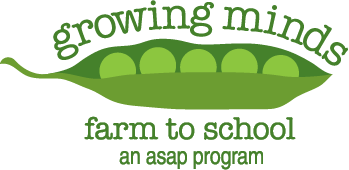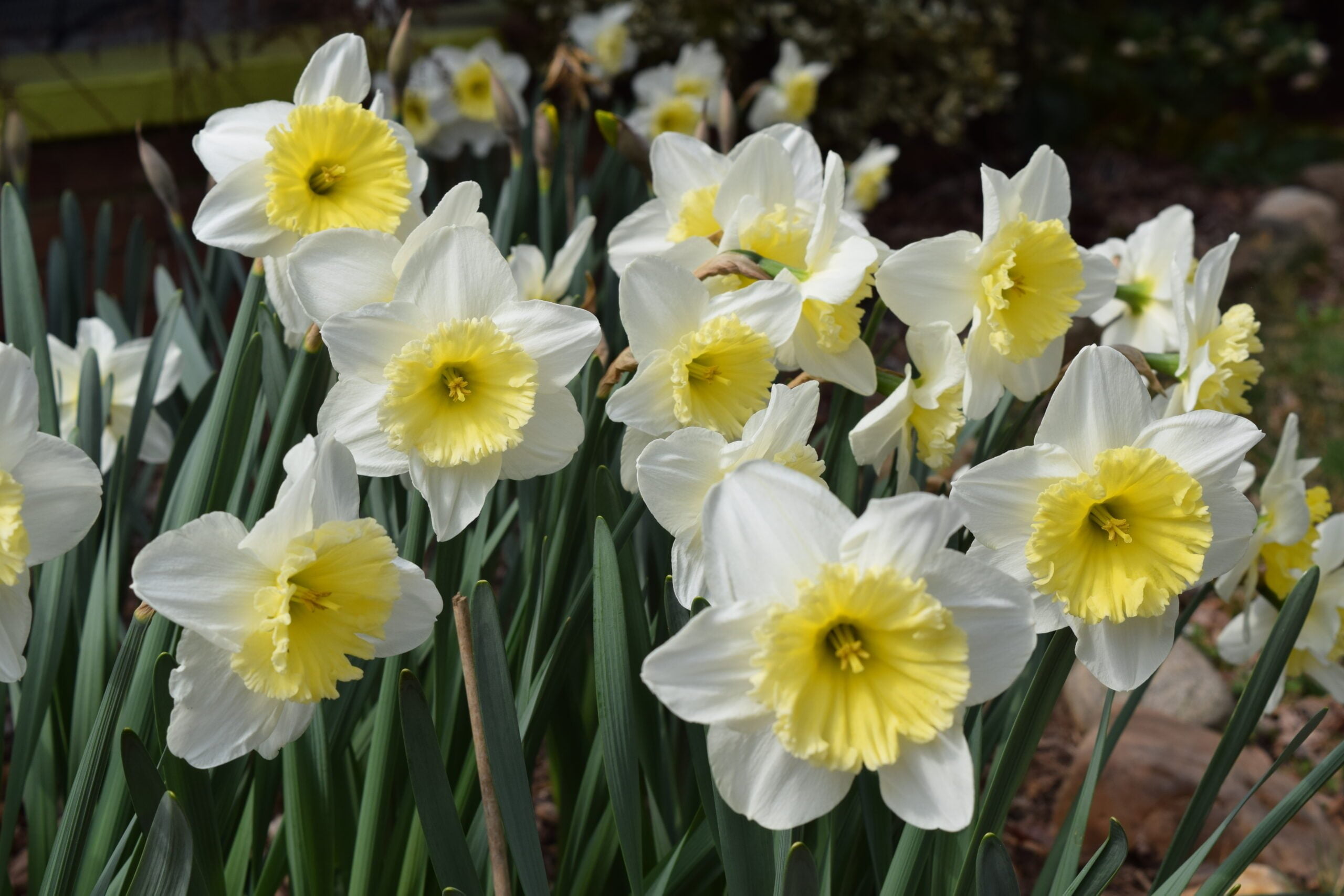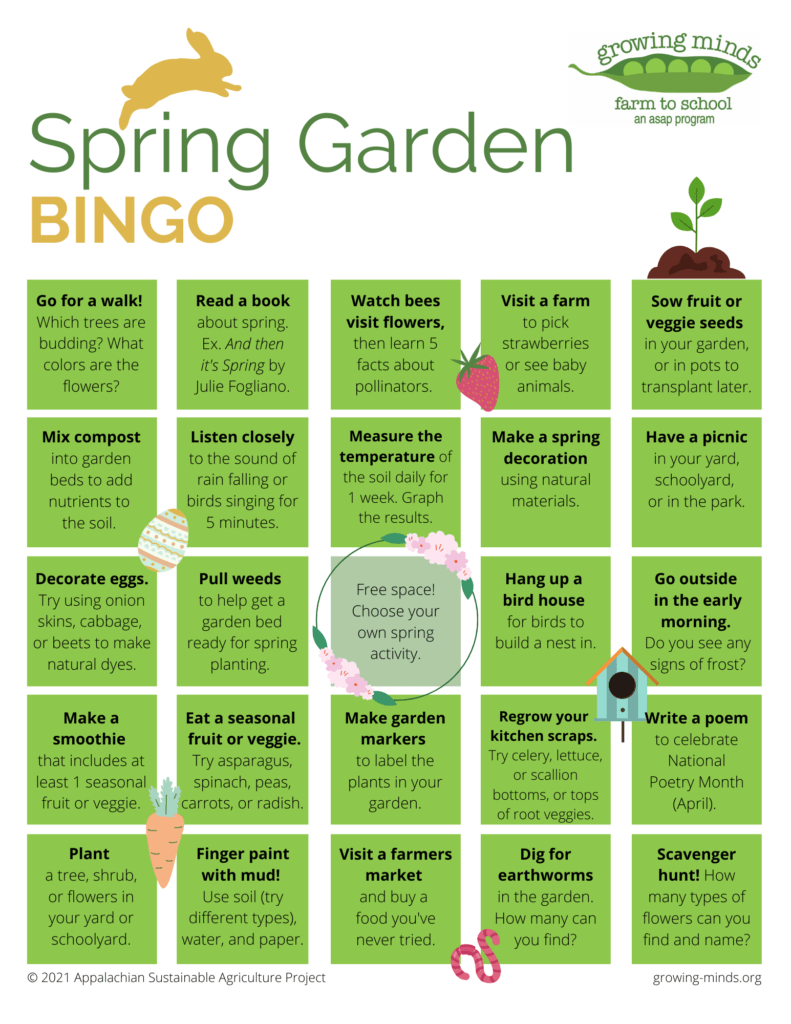This week’s theme is spring. Our “Growing Minds Day by Day” educational resource lists are designed for families and educators.
Books:
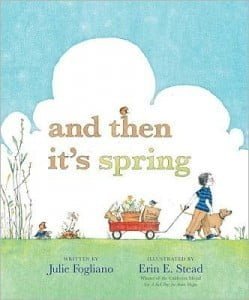
And then it’s Spring
by Julie Fogliano
A young boy and his dog are sick of winter, so they plant a garden and begin to wait. And wait, and wait. Just when it seems as though the brown will never become green, spring magically appears! This book is a quick read that benefits from paying close attention to the beautifully illustrated pages. Watch a read aloud on YouTube.

This Year’s Garden
by Cynthia Rylant
As the seasons change, so do the garden tasks for Uncle Dean, Granny, and Uncle Joe. Winter is a time for planning next year’s garden, spring is for planting, and summer and fall are for harvesting. Reflecting on a full year of maintaining a family garden, this story emphasizes the enthusiasm the family has during the winter for starting next year’s garden. Watch a read aloud on YouTube.
Find more books
Both of these books are available for educators in the Asheville area to check out from our lending library. Visit the Growing Minds’ farm to school literature database to discover more of our favorite children’s books.
Local Food Recipe:

Spring Fruit and Veggie Smoothies
Makes 30 1 oz. samples, or 3-4 full-size smoothies
Ingredients:
- 1 cup plain yogurt
- 1 cup local carrots
- 1 cup local spinach
- 2 cups frozen fruit (strawberries would add an additional boost of spring flavor!)
- Splash of water
- Honey, to taste
Directions:
- Put all ingredients in a blender and blend until smooth.
Educational Resources:
Celebrate the Spring Equinox
Spring officially begins on the Vernal (or Spring) Equinox, which falls on March 20 this year. The annual date of the spring equinox varies each year between March 19 and 21. After this date, the Earth’s Northern Hemisphere begins to tilt more towards the sun, resulting in more hours of daylight and rising temperatures. Learn more about the science of the spring equinox and find ideas for celebrating this annual event in The Old Farmer’s Almanac.
Lesson plans and more
Explore our March resources and April resources, including seasonal lesson plans, spring recipes, book recommendations, and This Week in the Garden activity guides. Are you hesitant to start a spring garden with your students because you don’t know a lot of gardening? Get inspired by watching this short video, which features educators who are learning to garden alongside their students.
Activities:
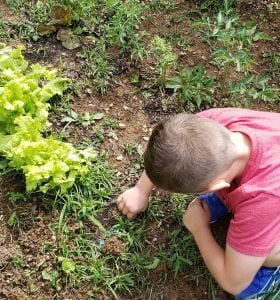
Spring Garden Activities & Ideas
Early spring is an exciting time in the garden. The dormant soil is awakening and insects and organisms are becoming active again. Seeds are germinating and beginning to grow. Spring bulbs that were planted in the fall–like crocus, snowdrops, and daffodils–are showing their colors. The weather is changing every day, making March and April a dynamic time to record daily temperatures, cloud cover, rainfall, and wind speed in the garden. With so much changing each week, this is an important time to visit the garden frequently.
There’s a lot prep work to be done in the garden in the spring, including cleaning up and composting debris from last year’s garden, weeding, adding compost or other soil amendments to garden beds, and making garden signs.
Vegetables that grow well in the cool spring weather include spinach, lettuce, sugar snap peas, carrots, and radishes. To help kids get excited about spring planting, offer a taste test of some of the vegetables and consider cooking with the veggies in the classroom or at home.
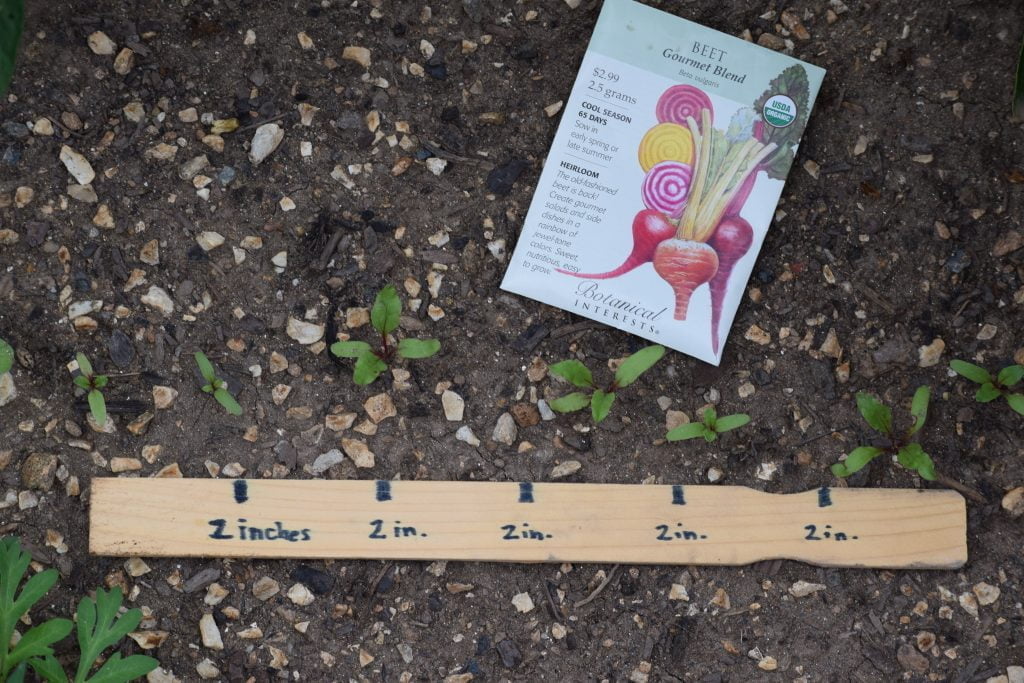
Make a dibble—a garden measuring tool. Give each child a popsicle stick, a ruler, and a marker. Help them measure one inch up the stick from the bottom and make a mark. Make another mark at two inches, and at three inches. Children can use the sticks in the garden to plant seeds at the correct depth.
Once you’ve made your dibbles, take children out to the garden and guide them in planting two rows of seeds. Look at the seed packets to determine correct spacing between seeds. Older children can measure the correct spacing. Guide them in sprinkling a bit of baking flour in every spot where a seed needs to be planted. Find more seed starting tips here.
Early spring is a good time of year to plant plant trees and shrubs in the garden, including fruit trees. Mid-spring (late March to April) is a good time to plant strawberries in Western North Carolina (you can plant a little earlier in the eastern part of the state).
If you planted a garden last fall, there may be greens or other hearty plants that “overwintered” and are now ready to harvest and eat. These crops might include collards, kale, spinach, mustard greens, or cilantro.
Gather the children and walk through the spring “soon-to-be” garden. Ask them to identify which plants they will grow, what animals they will see, and what other types of plants will grow. Then, have them “practice” planting the garden using their invisible tools. Get creative and ask them to make up their own tool to use, then have them demonstrate it to the class.
Make some garden-inspired art! Write poems or songs about spring, start garden journals, or make spring sidewalk chalk drawings of flowers, eggs, animals, or spring fruits and veggies.
Play Spring Bingo:
Cap off your week of celebrating all things spring with our Spring Garden bingo game! Use the bingo card below to keep track of your students/kids’ spring farm to school activities. Kids should check five consecutive boxes in a row, column, or diagonal to win (bonus points for checking all of the boxes!). Most importantly, have fun! Download a printable PDF Bingo Card.
Bingo Tips:
- Use the resources shared above (children’s books, recipes, and activities) to complete some of the bingo squares.
- Challenge another class or household to a bingo tournament! Take photos or videos to document each activity square that your students/kids complete, and share them with each other as you play.
- Keep in mind that the activities your students/children will be able to participate in may depend on their age.
—
That’s it for this week. Check back next week for new resources. Click here to access Day by Day resources from past weeks. If you didn’t find what you’re looking for here, please visit our Lesson Plans page.
